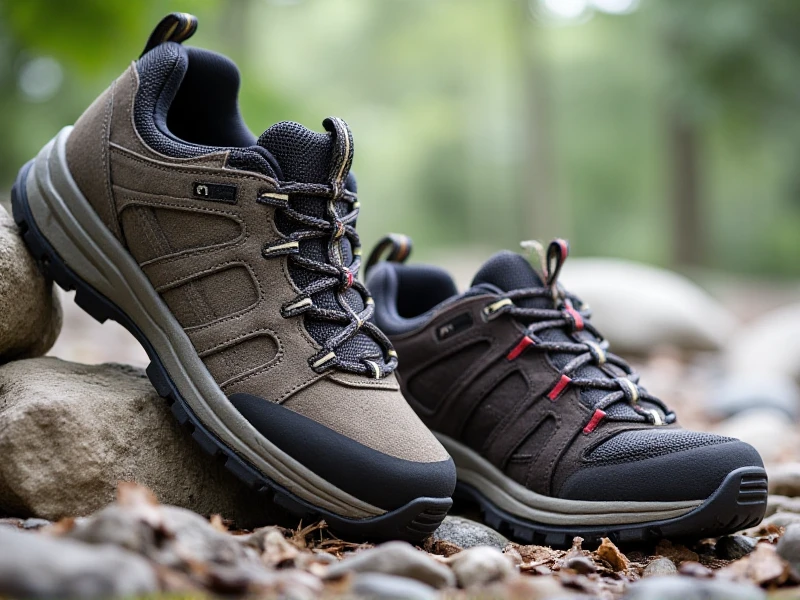The Ultimate Guide to Choosing the Perfect Women's Hiking Shoes for Every Trail
2025-06-05

When you hit the trails, nothing beats the sense of freedom that comes with exploring nature—fresh air, stunning views, and the gentle cadence of your steps. But as any hiker knows, that joy can quickly turn sour with the wrong footwear. Blisters, sore feet, or even slips on rocky terrain often trace back to the shoes you chose. That's why I'm diving into why women's hiking shoes are a game-changer and how to find the ideal pair for your next adventure. Whether you're tackling a local park loop or conquering a multi-day mountain trek, this guide covers everything you need to know. Ready to step up your hiking game? Let's get started.
Why Focusing on Women's Hiking Shoes Matters
For women, the fit and design of hiking shoes make a world of difference. Women's feet tend to be narrower in the heel and wider in the forefoot compared to men's, meaning a one-size-fits-all approach just doesn't cut it. Ill-fitting boots can cause discomfort or injuries like plantar fasciitis, which I've seen derail hikes for too many of my trail buddies. Beyond anatomy, women's hiking shoes often incorporate features like lighter weight and better arch support tailored to our biomechanics, reducing fatigue on longer treks. Investing in a pair designed specifically for you means more miles with smiles—I still remember my first hike in dedicated women's hiking shoes; the difference in comfort was night and day.
Key Features to Look for in Women's Hiking Shoes
When shopping for hiking shoes, it's easy to get overwhelmed by options, but zeroing in on core features helps simplify your choice. Here’s a quick rundown:
- Waterproofing and Breathability: For wet or dewy conditions, a waterproof membrane like Gore-Tex is essential to keep feet dry. But don’t overlook breathability—mesh panels that expel sweat on warm days prevent overheating. On a recent spring hike, my top pick maintained dryness while handling sudden showers.
- Traction and Support: Vibram soles are gold standard for grip across muddy slopes or uneven rocks. Look for lugs (those deep treads) that give stability without weighing you down, and a reinforced midsole for ankle support. For tougher trails, this combination minimizes slips, which I've found crucial for confidence.
- Cushioning and Fit: Adequate cushioning absorbs shock to reduce joint stress. A snug yet flexible fit allows natural foot movement; always try shoes with hiking socks and wiggle room for toes. Brands with women-specific lasts ensure a perfect fit from heel to toe.
- Durability: Materials like ripstop nylon or leather blend handle rough terrain without wearing thin quickly. I recommend checking reinforced stitching and toe bumpers for longevity, especially if you're a weekend warrior.
Top Types of Women's Hiking Shoes for Different Adventures
Not all hikes are the same, and the best shoes vary with your terrain. I've grouped them into three categories based on my trail-tested experience:
- Trail Runners for Light Hikes: These are lightweight, flexible, and ideal for short, fast routes or well-trodden paths. Brands like Salomon offer women's trail runners that shine in agility. Perfect for beginners or flat-terrain walks where speed matters.
- Hiking Shoes for Moderate Terrain: Midweight options provide balance—think durability for rocky sections and enough cushion for day hikes. Companies like Merrell design women's hiking shoes with arch support for added comfort. I use these for local nature reserves where rocks and roots keep things interesting.
- Hiking Boots for Challenging Expeditions: Full-coverage boots with ankle support excel in rugged, wet, or steep areas. Look for waterproof builds and stiff soles for backpacking trips. Columbia’s women's boots are a solid choice; they carried me through a rainy Appalachian Trail section without a hitch. Always match them to the difficulty level to avoid overkill on easy trails.
Tips for Buying and Breaking in Your Shoes
Once you've narrowed it down, smart shopping habits ensure a lasting bond with your shoes. Start by getting professionally fitted—many outdoor stores offer this service—and wear the socks you’ll use on hikes. Aim for a thumb-width gap at the toe to prevent blisters. When buying online, check size guides and reviews carefully. After purchase, break in your women's hiking shoes over short walks before big trips; trust me, skipping this step led to a painful lesson during my Grand Canyon endeavor. Finally, consider cost—quality pairs start around $100 but save money long-term by reducing wear-outs. Maintenance is key too: clean them after hikes to extend life.
With the right pair, hiking becomes less about the gear and more about the journey. I've seen too many women hesitate to start hiking due to worries about comfort, but finding stellar women's hiking shoes transformed my friend's from couch to summit in just months. Remember, the goal isn't perfection but joy on the trails. What are you waiting for? Embrace nature, invest in your feet, and let those shoes carry you to new horizons! Happy trails—I'd love to hear your stories in the comments!
Category: